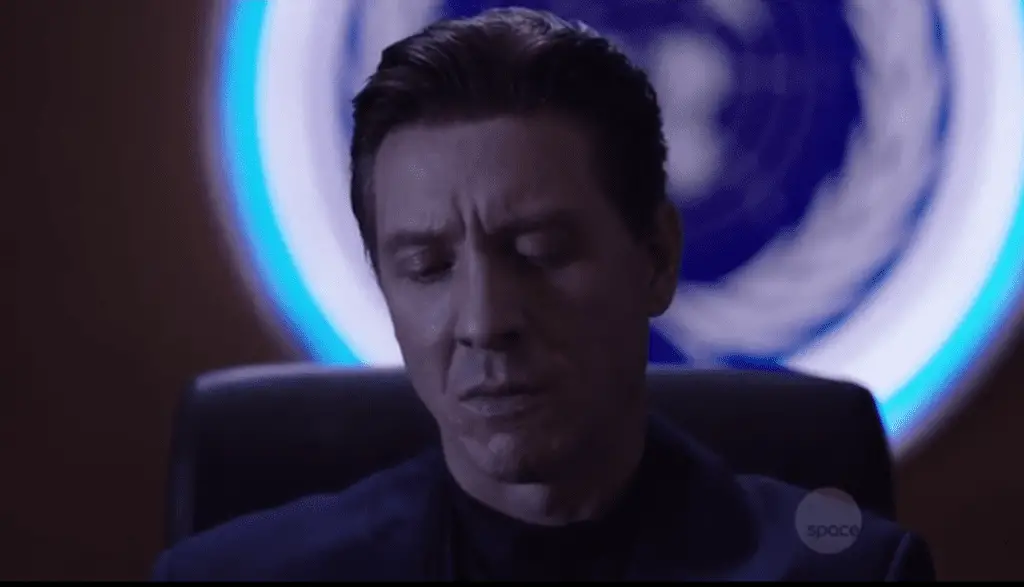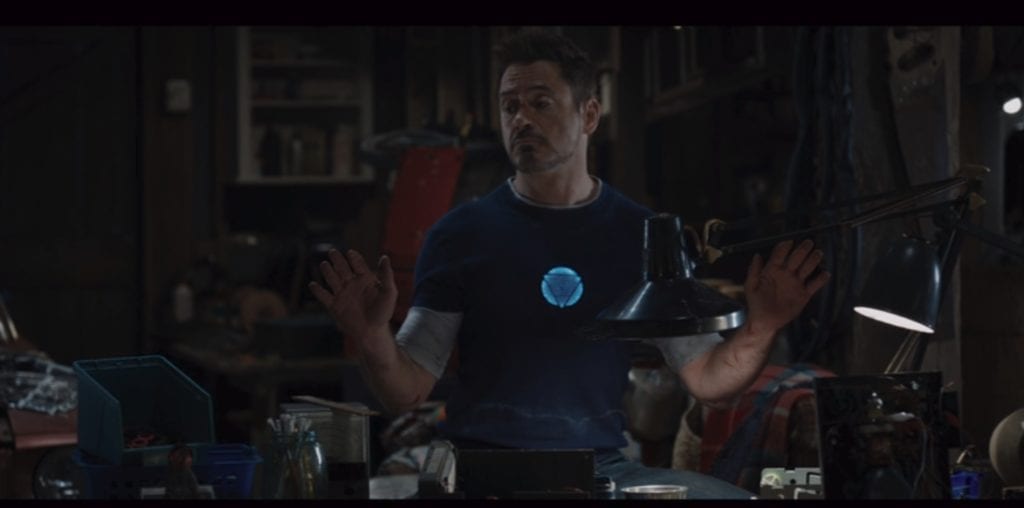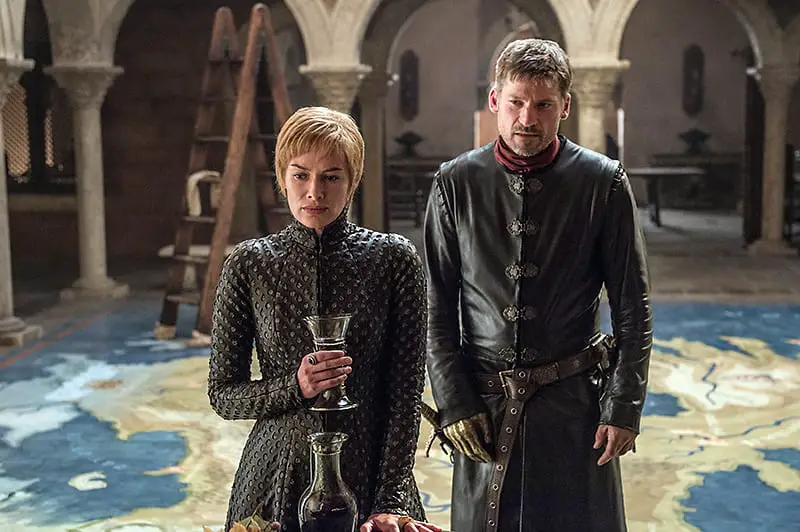Redemption arcs. They are so popular, I would almost dare to call them a trope. As Billy Flynn would say, ‘there is one thing people cannot resist, and that is a reformed sinner.’ It makes redemption arcs one of the most compelling narratives in any kind of media, and also one of the most popular ones. Whenever there is barely a hint of a chance at redemption, or even a redeeming factor in play, fans start imagining redemption stories even if the original media is not cooperating. But what is it that we usually get when we get them?
The Love Of A Good Woman
This is probably the most cliché option, and one of the most problematic ones. It was what people were worried about happening in The Last Jedi, and we all breathed a collective sigh of relief when it didn’t come. It is, simply, a story of how patient and unconditional love of a wholly good person – usually a woman – can turn the other person – usually a man – from their path of villainy.
The reason this is problematic is relatively obvious. It puts unreasonable demands on the “redeemer” in the pair. Until the villain is redeemed, the “good woman” normally has to bear his terrible character for a long time with angelic patience and nothing but forgiveness. It sends the message that this is what women in general should do. Also that if you let people abuse you long enough it will turn them good in the end. If you’ll forgive me this foray into the classics, The Tenant Of Wildfell Hall is the best example I know of exploring what exactly is wrong with this dynamic.
There are ways to make this work, though. In particular, it is when the “redeemer” merely provides the initial impetus and then doesn’t have to stick around for all the painful process of turning oneself into a decent person and bear it with angelic patience. They may or may not be then faced with the (almost) finished product at the end.
Think Pride and Prejudice – Elizabeth puts up with nothing from Mr. Darcy, he does most of his character growth out of our sight, and when we meet him again he treats her decently. Even when the ex-villain stays in the picture, though, this can be done well, as long as the redeemer isn’t asked to bear the first awkward attempts at becoming a better person with perfect equanimity and a smiling face. Simply put, the redemption must always be the work of the person redeeming themselves. The burden of it must not be put on anyone else.
I Need A Friend
This is a vastly popular strategy. In many ways it’s similar to the trope above, only in a healthier form. The focus is not so much on building up the redeemer. Instead, it’s on the traumatic events in the villain’s past. The key to this arc is having a good guy with a similar kind of traumatic or complicated background the bad guy has – enough that they can relate, at any rate – and then talking to them and giving them enough understanding that the villain stops feeling like villainy is their only option. The Expanse plays with this approach a little with Errinwright, even though it ultimately goes in a different direction.

The problem with that is the whole messy issue of villains with traumatic pasts. Because on one hand, people don’t just do bad things for no reason, but on another hand, the fashion of crafting this sort of villain background often seems to imply that all people with trauma in their past turn into villains. Which is obviously bullshit. In this kind of redemption, we’re directly faced with this question. Two people with the same, or similar, trauma, one turns to villainy and the other doesn’t. So then, there must have been some additional reason why Errinwright turned to villainy. And unless we deal with that, no amount of talking about the trauma is going to solve the situation entirely.
Don’t get me wrong, friendship absolutely is magic. But still, pretending it’s enough in itself to turn people completely around is a little naive even for me. Besides, in the world of real life implications, it seems to send the message that friends of any mass shooter should have just tried a little bit harder, because if they had, he would have never gone bad. Hell no to that.
Face the Consequences
Another popular way to jump-start redemption is having the villain face the consequences of their bad deeds, and being unable to accept them. The most obvious case of this would be Tony Stark, who finally saw first hand how the killing of innocents with his weapons can look like and realized he bore guilt for it.
But another example would be Severus Snape. His redemption certainly had aspects of “the love of a good woman” in it, but Lily wasn’t actually personally involved in any of that. The immediate inspiration was the possible consequences of Snape’s action to her, so it falls closer to this category.
This is a good way to write a convincing redemption story, as long as it’s viable that the villain in question wouldn’t have known the full consequences until then. By that, I mean it’s not convincing to have a person who regularly murders people with a knife suddenly look into the eyes of their victim and feel regret. They must have seen people die many times before. It works, however, for Stark, who had likely never seen death in person before. And it works for Snape as well in a different way. He knew he would never hurt Lily in person, and it didn’t occur to him that his Death Eater work could endanger her indirectly. The assumption behind this is simply that people are prone to lying to themselves about the consequences of their actions, which is an undeniable truth.

This approach also has the distinct advantage of working even on villains that are pretty far gone, if they are still redeemable at all. Except, you know, those knife-killers.
Changing Places/Losing Privilege
Another shock frequently capable of making villains change their ways is a radical change of their situation. Usually this is when when they find themselves in a position of vulnerability, frequently even in the position of those people they’d abused until then. This would be the case of Thor in the first film. Partly, it is also the case of Zuko in Avatar: The Last Airbender, since his long journey with his uncle outside of his royal privilege is a crucial part of his redemption arc. And much more convincing than Thor’s, by the way.
This is one of the more questionable options, psychology-vise. Because while it is certainly imaginable this might happen, it’s also very likely that losing privilege would only lead to more anger and vengefulness on the villain’s part. It works well enough, I suppose, with bad guys who aren’t truly malicious, like Thor. If arrogance rather than anger or inferiority complexes are the main driving point behind the “villainy”, it makes this story a bit more convincing. But then again, damaged pride can lead to anger just as well. Thor, when he couldn’t lift his hammer, decided to take it as a lesson. Many others would have lashed out in anger as a result of being denied what they see as their due.
In other words, this, too, has some implications for how the “villainous mind” is supposed to work. Generally, it presupposes a lack of self-reflection or lack of a very strong motivation. The character is chiefly going through the motions of what is expected of them or what they are used to or what their culture/situation shaped them into.
It also presupposes a fundamentally very sweet disposition and strong personality underneath, to be able to turn their life around in such a way when their circumstances change completely. Even leaving aside lashing out with anger, I think most of us would spend a long time dealing with their own issues after they had their rug pulled from under them in such a way. After a long period of time it can lead to change, perhaps, but unless enough of that is given, it just makes it look like people can immediately bounce back from anything. The real life implications here aren’t so bad, but still. We might laugh at the distress of the privileged, but it’s a real thing. It would be nice if the media we consume taught us to expect it. Perhaps we would be less surprised, then.
My Life Is Suddenly Pointless
This is a case of a villain suddenly finding themselves without the thing that has been driving them their whole life. The best case that comes to mind is Jaime in A Song of Ice and Fire. His redemption arc is a combination of many of the aforementioned ones. The love of a good woman as well as substantial loss of privilege play a crucial part. But none of this would have probably helped anything if his relationship with Cersei wasn’t falling apart at the same time. The final push he receives is finding out that Cersei has been unfaithful to him. Whatever we might think about a motivation like this, it has a profound effect on him.

This scenario resembles the previous one in how it presupposes that the villain is mostly influenced by external factors in their choice to do bad things. Remove the external factor, the bad behaviour disappears. As it stands in Jaime’s story, combined with other factors, it works.
On its own though, this, too, is a bit of a dubious path to redemption, because it tends to neglect that people act in patterns. Merely with the external motivation disappearing, but no positive one appearing, one would have no impetus to turn their life around. Not only would they not turn into an actual hero, but even achieving a kind of moral greyness would be difficult, because why not simply continue as they always did? I suppose the greyness could be achieved if the loss of their life’s motivation was so substantial that it threw then into the kind of depression and lethargy that prevented them from doing much of anything, but that’s about it.
Oh, and the other case where this would work, naturally, would be people who are doing bad things under duress. But I will never call those villains in my life, so there’s no space to discuss them here.
Wait, Why Am I Doing This Again?
This is closely related to the previously discussed point. Only in this case, the motivation is not a particular thing or person, but simply motivation in general. The villain spends years in their villainy, and slowly but surely, they stop seeing the point. Either they just get tired of the endless cycle of violence they are trapped in, or they take a good look at the sad and lonely life it led them to and decide that is not what they want to spend the rest of their days doing. This usually ends with some kind of moral greyness. Cardinal Richelieu has little moments like this in The Musketeers, though the narrative inevitably returns him to the villain he was doomed to be.
I won’t lie, this is one of my favourite ways to do redemption, because it is the only one that is entirely self-contained. It doesn’t necessitate an outside influence to pass. It trusts the ability of the villainous character to realize the error of their ways on their own, without being overbearingly self-flagellating.
This, however, also means it’s one of the hardest ways to write convincingly. Especially in shorter media like films, where there is usually not that much space. In fact, for this reason it can hardly ever be found in films. To be done properly and believably, it requires a longer time period for us to watch the progress of the villain, to see them motivated and full of anger at the beginning, and just going through the motions towards the end, and then reaching the point when they just cannot be bothered.
That point, too, needs to be well-crafted to be convincing. Perhaps there is a hitch in the evil plan that would require the villain to go to some extra effort, and suddenly they just cannot find it in themselves to do so, and leave the scheme unfinished instead. Perhaps it’s their birthday and they realize they have no one to celebrate it with and take a long, hard look at their life. All right, the latter would probably look rather ridiculous with a supervillain in a comics or a fantasy novel, but still, there are many scenarios like this than can be made workable.
The inherent danger, of course, is in rushing it and just making the villain look like an impatient toddler who couldn’t even see a single plan to its end. Not that there’s no fun in villains like that, but it’s hardly a redemption story.
Hold Up A Mirror
This, once more, can similar to the previous case, only this time with an external interference. There is someone else showing the villain the pointlessness of what they are doing, showing them what they have become. The most famous case of this would probably be Mr. Darcy in Pride and Prejudice, whose mirror is held up by Elisabeth, and what he sees in it shocks him. Anther, more recent case, would be Thor speaking to Loki in Thor: Ragnarok, showing him how stupidly predictable he became.

The problem with this approach is most succinctly summed up at the end of Witches Abroad. In short: it presupposes the villains don’t know, and they care. It’s of course possible in some cases, but we’re either working with a degree of innate goodness here that is repulsed by the fall, or – perhaps more frequently – with a degree of vanity that doesn’t like the image it’s presented with. And, well, is vanity really the best basis for redemption?
Sure, it can get the villain to change tack, but without being paired with something else, too, it can hardly lead to a true change of heart and behaviour.
My Life Has Meaning
This is something of an opposite to the “my life is pointless” option, because this is the villains finding their motivation. In particular, finding their motivation to do good.
In truth, the word “villain” is not quite accurate here, since this is usually used more for the morally grey types, and can in fact serve as a second step on the path from pure villainy. The most notorious example for this would probably be Han Solo, who found something he actually cared about in the Rebellion, and so he stayed and devoted his life to something more worthwhile than smuggling.

The issue here, of course, is when this is used for actual villains. Doing bad things – as in, actual, serious bad things – is not just a result of nothing better catching your interest, and it needs to be reflected somehow.
Gradual Influence
Another case applied more to the morally grey characters, or to characters where moral greyness is the goal, instead of actual goodness. This is a situation where a character is exposed to people with better morality than they themselves have, and by a sort of osmosis, they internalize this better behaviour, at least in part. Who comes to mind is Natasha Romanoff. SHIELD is hardly the paragon of virtue, but still, given her upset over the red in her ledger, there is some moral core in her that seems to have grown while part of that origination.
This, again, presupposes a rather significant underlying goodness, or a very long exposure. Having a character change by osmosis after a fortnight of time spent in the company of good guys is offensive both to the media consumers, and to real life people who ever spent time next to someone rather reprehensible for years without it having any effect.
Unexpected About Turn
The cases I have mentioned here are all ones that make sense, to a smaller or bigger degree. But of course, there is always the last option. The case where a character suddenly does an about-turn towards good behaviour, without any reason whatsoever. There are more cases than can be counted in the media, so as one for all, I’m going to name Theo from Teen Wolf, whose “redemption story” was one of the worst ones I’ve ever come across.
Every time I see a redemption story like this, I have to ask myself: why? There are so many ways to craft a good one. The best ones, in fact, usually combine several of these factors. Jaime, Zuko, even Snape. We might not consider them wholly redeemed, but at the very least we can clearly observe the change they go through. There is something exhilarating about it, and it makes one understand why redemption arcs are so popular. And why writing one badly is such a terrible waste.

